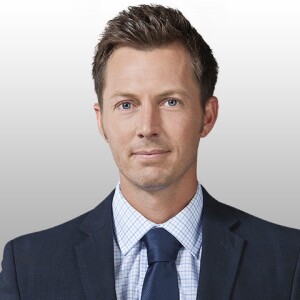PHOENIX — “You know, we’re trying to populate the desert, well you can’t do it without food,” said Curtis Merritt.
Merritt is sharing his vision for the future of agriculture — one that looks to utilize empty commercial buildings for sustainable farms.
“This whole thing is an abandoned skyscraper that a company has pulled out of because all of their workers are now working from home,” said Merritt, pointing to a large rendering designed by a graphic artist showing his concept.
What truly makes this rendering unique, is dead center in the middle of this skyscraper farm, stands Merritt tending to the crops. It's an image he's come a long way to find.
“It’s very unnerving, not having a direction when you leave the military,” said Merritt.
The Navy veteran is talking about the uncertainty that comes when a military career ends. It can be a transition into civilian life where the skills you’ve acquired don’t always translate in a post-service world.
Merritt spent his time aboard submarines and when he left, figuring out his next career wasn’t easy.
“It takes time to put yourself back into society,” said Merritt. “You have to relearn how to live now that you’re not in a hostile environment.”
The lack of direction, often combined with PTSD and other trauma, can leave those who served our country feeling lost. It’s a huge change coming from such a regimented former life. Every year, more than 200,000 people embark on that journey.
“We all have a role to play in helping a veteran successfully transition,” said Bob Beard.
A Marine veteran, Beard is taking on that challenge with the Veterans Imagination Project at Arizona State University.
“This is a program that prepares them for the future, not just five years into the future, but 15-20 years into the future,” said Beard.
During the eight-week program, participants are asked to research a desired career field and examine what it could one day look like. Expert mentors help them identify trends and potential opportunities in those industries by imagining where they’re going and what the jobs of the future might be.
“They start to get a sense of what their own personal future might look like and then we pair them with a concept artist who helps them bring these future visions to life,” said Beard.
Merritt, a gardener, is running a project called The Modern Forest. It grows a variety of fruit trees in an urban area. It's research for what he sees as a way to understand what it might take to grow food in more extreme but controlled areas.
“You take small ideas and build upon them when you are here and that’s how we get these grandiose ideas of putting a sustainable system inside an abandoned skyscraper,” said Merritt.
Air Force veteran Dominic Winton foresaw himself working in cyber security for implanted devices like Neuralink.
“He imagined a cross between a dentist appointment and the Apple Genius Bar, where you could go and get your firewalls and cyber security settings updated for these devices,” said Beard.
Other ideas center around futuristic ways to reclaim and reuse personal wastewater by utilizing Artificial Intelligence for social services. The jobs for each may seem far-fetched at first but not so much when you realize how quickly things change. Each rendering includes the veteran hard at work within this vision.
“We’re helping these people make memories of things that haven’t happened yet,” said Beard.
When Merrit presented his idea for farming inside unused buildings at the Futures Visions showcase, the Mesa Chamber of Commerce immediately sat up and wanted to hear more. It was a powerful message spawned by a powerful image that’s given him renewed motivation to manifest it into reality.
“It’s certainly motivating and makes me want to work hard to achieve it,” said Merritt.
Veterans who would like to enroll in the program do not have to be enrolled in ASU. Click here for more information on the Veteran Imagination Project.


